Fluid Paintings Round 2 (With Video)
I'm glad everyone liked the first set of fluid paintings. This week I decided to test out some different mediums against each other. The first set of fluid paintings I used water, flow-aid, and alcohol as mediums. This time I wanted to see what patterns I could get by switching it up. For this set I used Floetrol (latex based), silicone, water, and alcohol. I used Floetrol and water to thin all of the paint. Then I used alcohol, silicone, or no medium to see what effects were caused by the different mediums.
Here is a short video I put together of a few of the pours (sped up 180%):
If there is some other part of the process that you would like to see in these videos or some part of the technique that you would like to see explained in more depth then please let me know in the comment section.
Coastline 1- Acrylic on Canvas Board 6" x 6"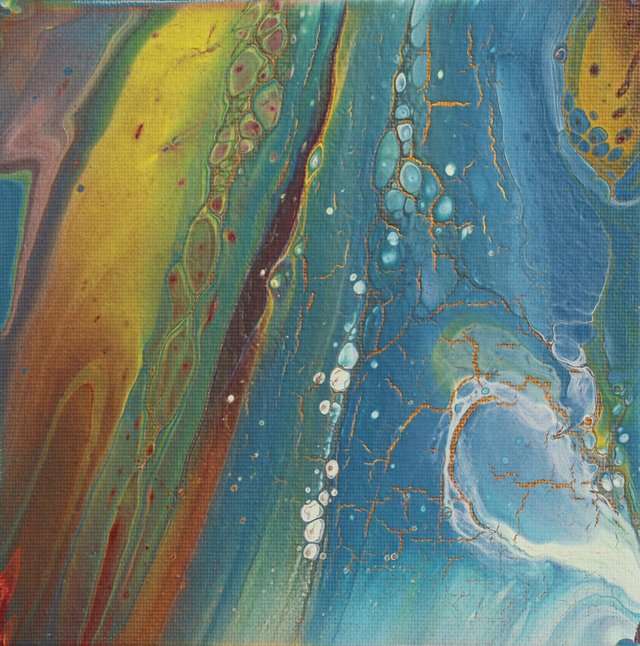
Coastline 2- Acrylic on Canvas Board 6" x 6"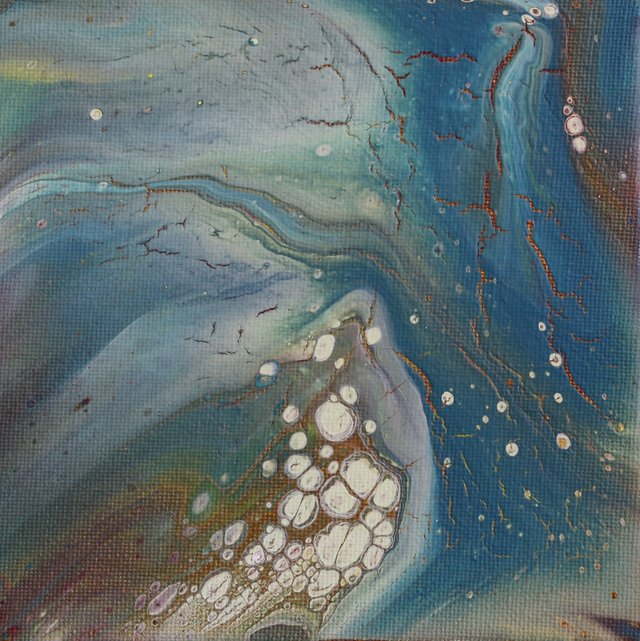
Coastline 3- Acrylic on Canvas Board 6" x 6"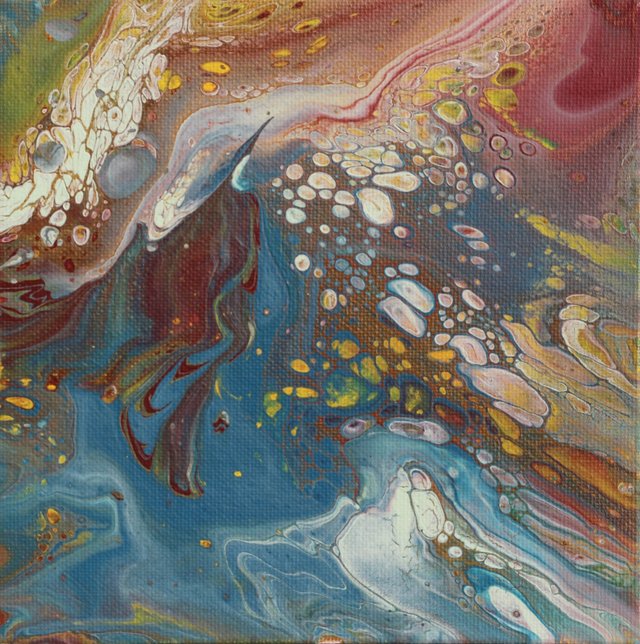 The first set of paintings, Coastline, were done using alcohol between each layer of paint . I wanted to get a comparison of the patterns that alcohol create versus silicone.
The first set of paintings, Coastline, were done using alcohol between each layer of paint . I wanted to get a comparison of the patterns that alcohol create versus silicone.
Cellular Psychedelic 1- Acrylic on Canvas Board 5" x 7"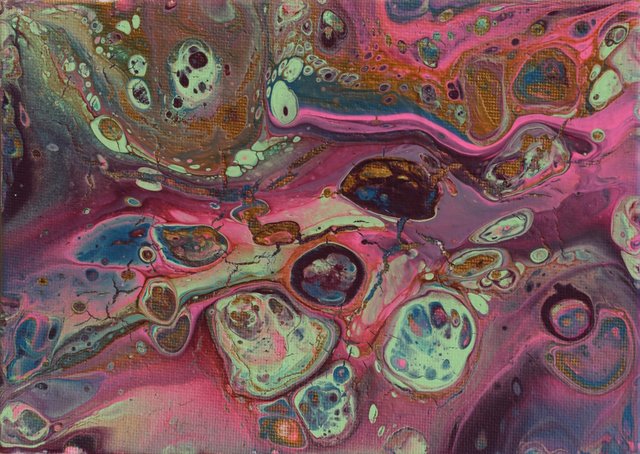
Cellular Psychedelic 2- Acrylic on Canvas Board 5" x 7"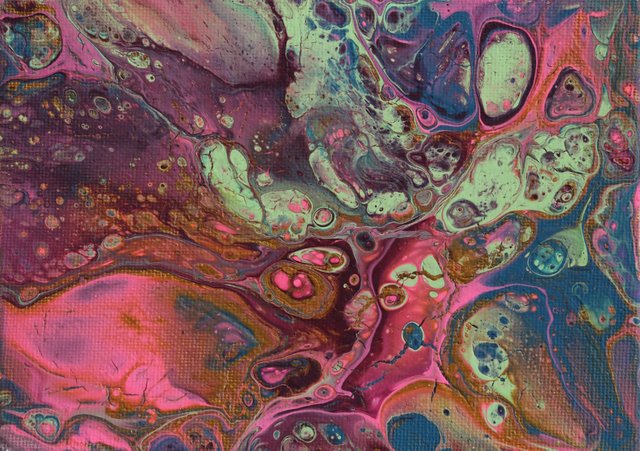
Cellular Psychedelic 3- Acrylic on Canvas Board 5" x 7"
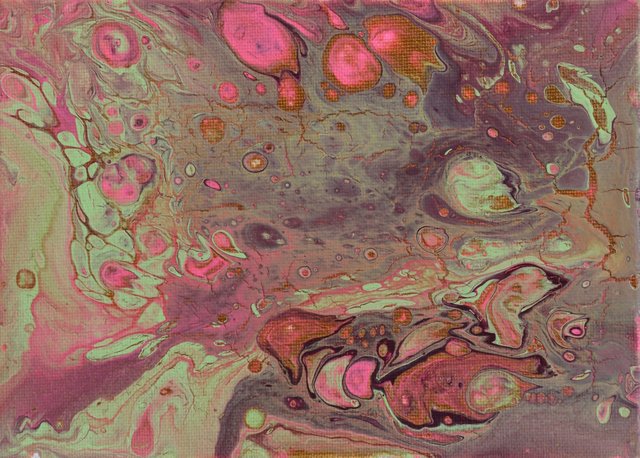 In the Cellular Psychedelic series I used silicone instead of rubbing alcohol between each layer of paint, and it produced much stronger cell patterns.
In the Cellular Psychedelic series I used silicone instead of rubbing alcohol between each layer of paint, and it produced much stronger cell patterns.
Stone Galaxy 1- Acrylic on Canvas Board 8" x 10"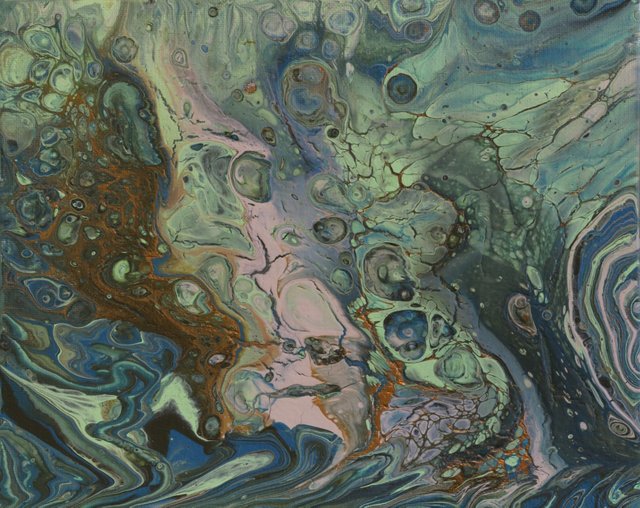
Stone Galaxy 2- Acrylic on Canvas Board 5" x 7"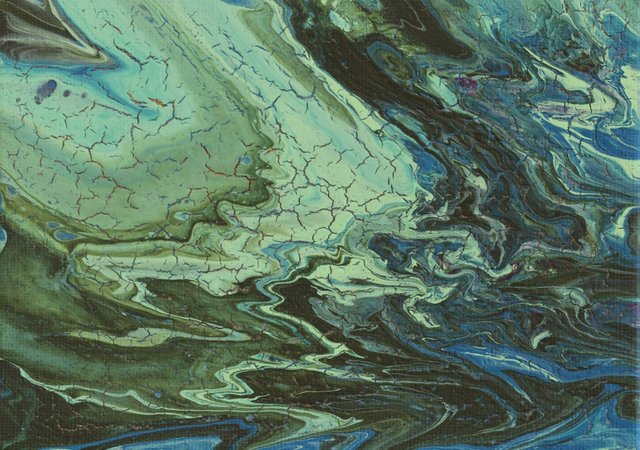
Stone Galaxy 3- Acrylic on Canvas Board 5" x 7"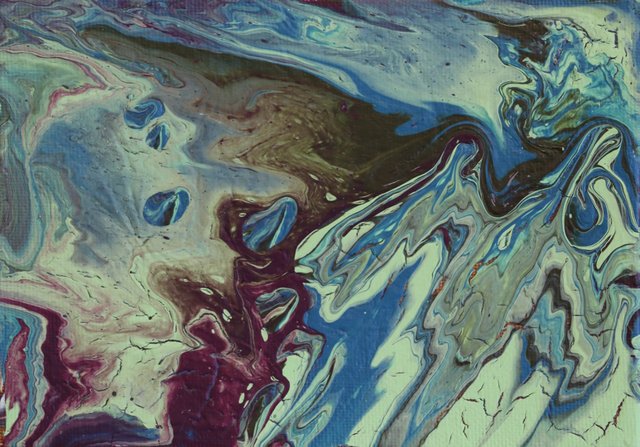
Rainbow Rock- Acrylic on Canvas Board 5" x 7"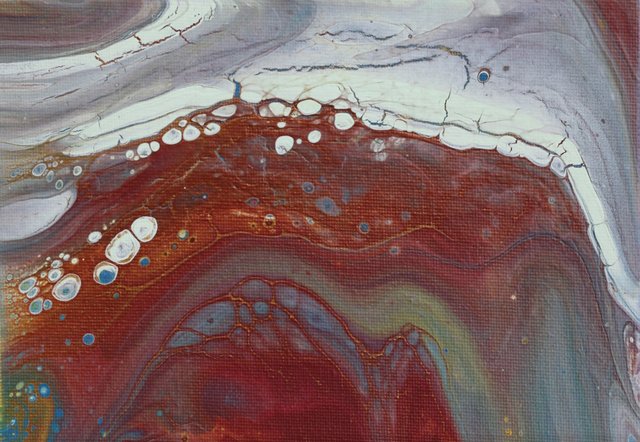
All of these paintings are available in my store at Curious Observation

In the end I found out that the silicone produced much stronger separation between the layers of paint which created the cool cell patterns that are more prominent in the first Stone Galxay painting and the Cellular Psychedelic series. While the rubbing alcohol's effects weren't as powerful as the silicone, it still might be the better option in producing archival paintings that will stand the test of time. The silicone makes the bond of the paint questionable. It is uncertain how long the bond will last. It isn't a technique that has been used long enough to have any long standing data even though it is a widely used technique.
Many of the paintings from this round ended up cracking. I suspect it has something to do with the Floetrol. Cracking is usually caused by uneven drying, and even though my paint was much thinner this time it cracked. When I was just using the water and flow-aid in the first set of fluid paintings I experienced no cracking even with thicker paint. So I will be experimenting with that to try and get that under control. Although it produced a cool effect in most of the paintings I would like to know how to get the same effects that come with using Floetrol without the cracking.
I'm already ready for the next fluid painting session to see what else I can pick up. Maybe I will do a set of these about every week for a while, especially if they continue to get a good response from everyone.
If you enjoyed this post I hope you will upvote, resteem, and follow me. Please comment with any insights, suggestions, questions, or complaints.

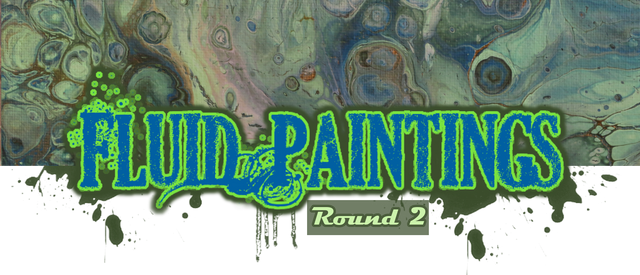

love it.. thank you